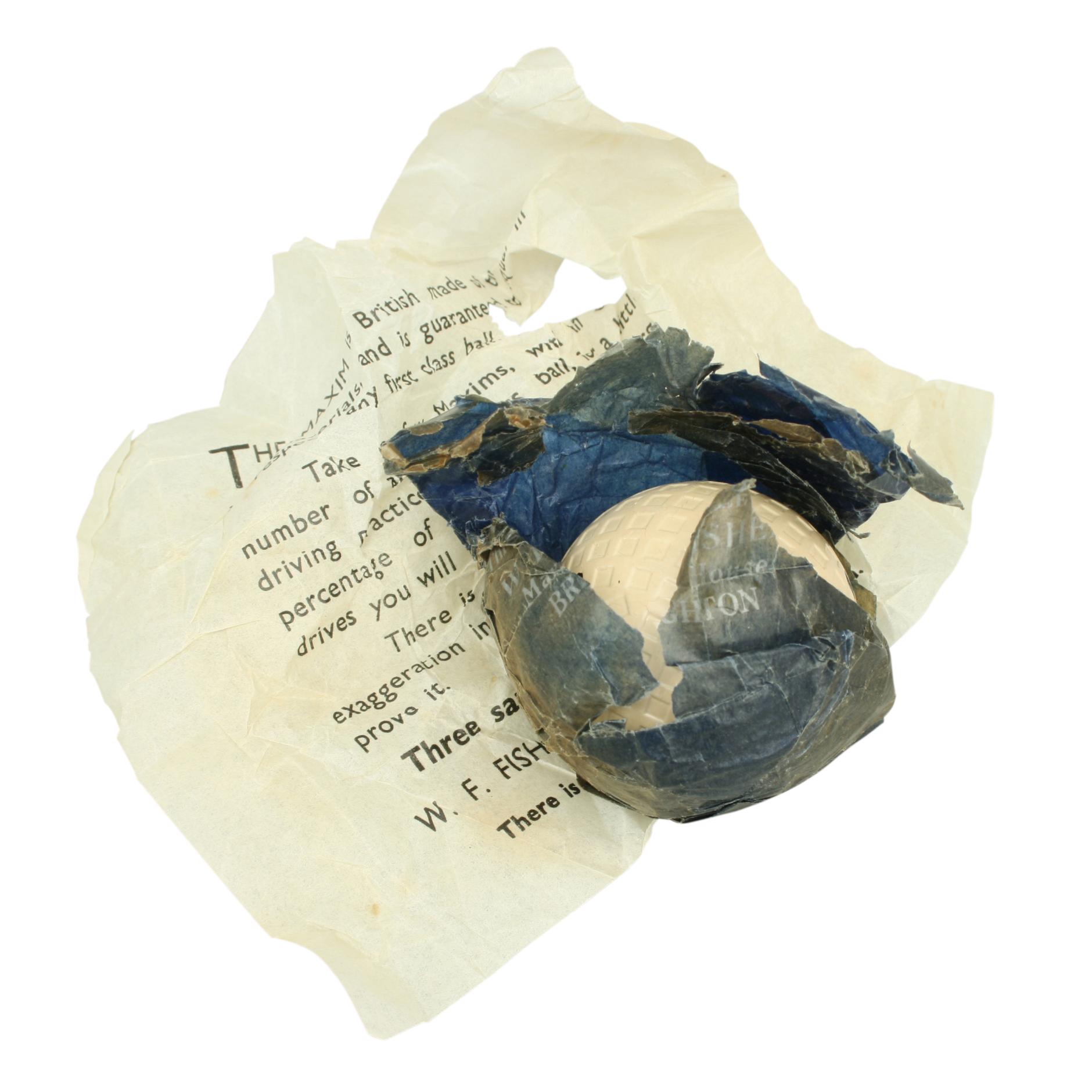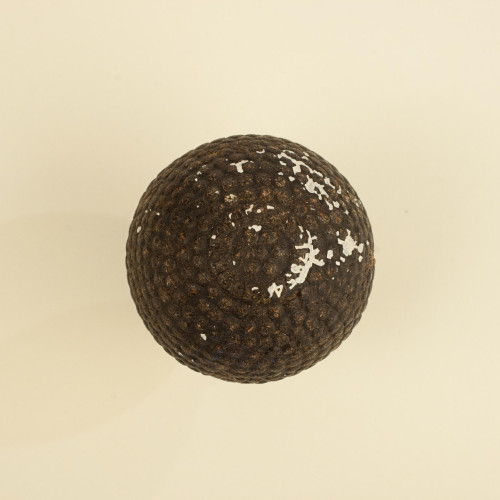- Home
- Golf
- Balls & Bags
- Spalding 'Kro-Flite' Golf Ball
Spalding 'Kro-Flite' Golf Ball
Spalding 'Kro-Flite' Golf Ball
26250
Spalding 'Kro-Flite' Mesh Pattern Golf Ball.
A wonderful example of a 1920's Spalding rubber core golf ball in mint condition. The ball has a square mesh pattern and is called 'Kro-Flite'. The Kro - Flite was first manufactured in the 1920's and eventually became one of Spalding's most popular brands. The ball is with it's original outer blue wrapper and advertising paper that was wrapped around the ball. The advert states:-
The "MAXIM" is British made of the finest materials, and is guaranteed to equal in all respects any first class ball. Take a few Maxims, with an equal number of any first class ball for a little driving practice. At the end of a large percentage of your longest and straightest drives you will find the Maxim. There is not the smallest degree of exaggeration in this claim. You can so easily prove it. Three sample Balls 2/6 post free. W. F. Fisher, Maxim House, BRIGHTON. There is nothing better than the Maxim.
The ball is approximately 1 5/8 inch in diameter (4.1 cm).
The Kro - Flite was first manufactured in the 1920's and eventually became one of Spalding's most popular brands.
A. G. Spalding & Bros. was founded in 1876 by Albert Spalding, a baseball player and manager. They were known for their baseballs before branching out into the golf business in the 1890's in the United States, and Britain shortly thereafter. In Britain Spalding's main business seemed to be golf balls more than clubs. In 1898 they signed a contract with Harry Vardon. The British Open Champion was to endorse their gutta percha ball called the 'Vardon Flyer'.
The rubber core ball (the ancestor of the modern ball) began its life in the late 1890's. The first mass produced rubber core ball was by Coburn Haskell of Cleveland, Ohio. The first core balls were hand wound with elastic thread with a Gutta-percha cover, moulded with the raised square mesh pattern of their predecessor. The slight irregularities in the early wound balls made them quite lively, it was not until the invention of the automatic winding machine by John Gammeter (an engineer at Goodrich) and the change of pattern from mesh to bramble that the balls became more consistent and predictable. In later years, the 1920's, the design went back to a mesh pattern with lattice design as the ball described above.
1900-1949
1920's
Excellent, mint condition.
Thank you for your enquiry.
We will get back to you soon.
Please create wishlist to add this item to
RELATED ITEMS



























